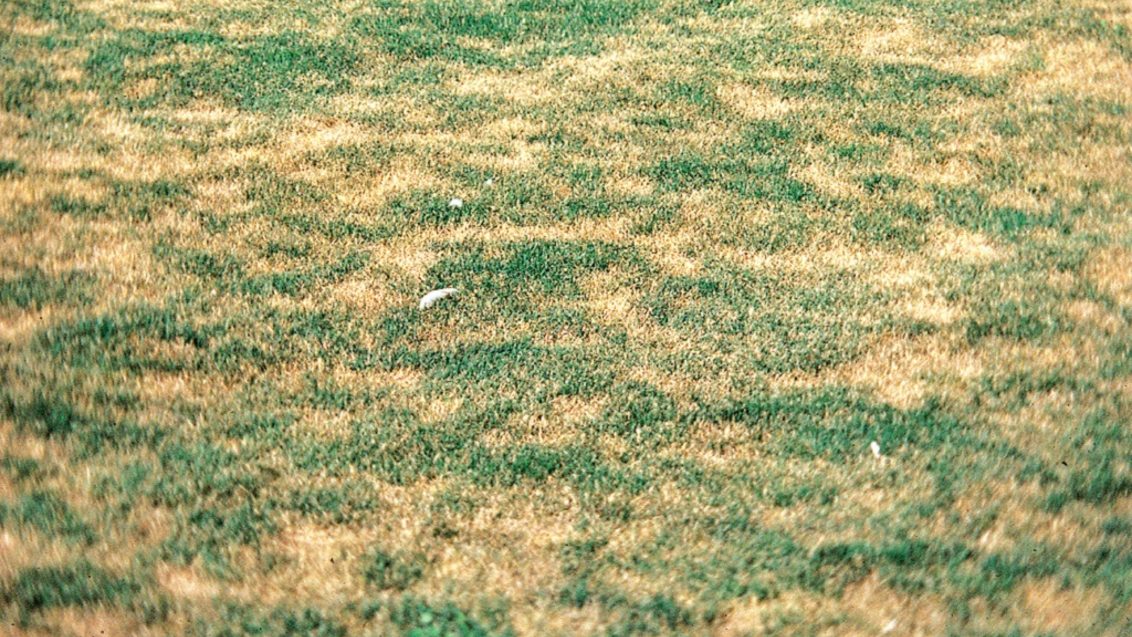Sod Webworm
Insects
Identification
Sod webworm is a relatively thick caterpillar up to 25 mm long with a pale green-brown body that is marked with characteristic dark spots along its length. When mature the adults become a slender bodied moth with a wingspan of 2.5 cm. Their wings are grey with black spots and transverse dark wavy lines.
Life Cycle
Female Sod Webworms moths drop their non-adhesive eggs onto turf while flying at night. The eggs fall into the thatch and hatch within 10 days, depending on temperature. Peak hatching occurs in early summer and continues throughout the summer months. The eggs tend to be oval or elliptical in shape with longitudinal ridges on the surface than run from pole to pole. Upon hatching most larvae burrow into the thatch and conceal themselves with particles or debris. These larvae remain concealed during the day and wander out at night to feed. By late spring or early summer the young adult moths emerge and fly just above the turf. These moths are especially active at dusk. The entire lifecycle generally takes about 6 weeks, and in most regions this pest has 2-3 generations per year.
Symptoms
Sod Webworm larvae feed on tender leaves and stems, causing physical injury and opening areas of plant tissue for infection. Later instar larvae will often remove grass blades and drag them into their tunnels for feeding. Damage first appears as small brown patches, often mistaken for fungal disease. Upon close inspection the leaf margins may be ragged where young larvae have been feeding.
Considerations
Maintain rapid turf growth and recovery. Warm season grasses can outgrow spring and early summer damage. The worst damage occurs as turf growth slows towards the end of the season and recovery is compromised.

